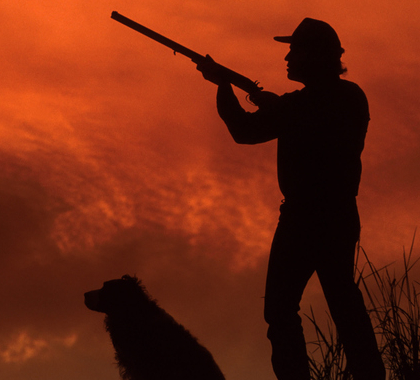The U.S. Department of Interior’s (DOI) Fish and Wildlife Service (FWS) is allowing more fishing and hunting opportunities on federal wildlife refuges around the country.
Interior Secretary Ryan Zinke announced FWS had finalized a rule allowing new hunting and fishing on 30 additional national wildlife refuges in Arkansas, California, Florida, Illinois, Indiana, Maine, Maryland, Michigan, Minnesota, Missouri, Montana, New Hampshire, New Jersey, New Mexico, New York, North Dakota, Ohio, Oregon, Pennsylvania, Utah, and Wisconsin.
In its September 7 press statement announcing the move, FWS said with this action the number of refuges where hunting is allowed is increasing to 377, and the number of refuges allowing fishing will rise to 312.
With this expansion, the Trump administration is opening or expanding an additional 251,000 acres to hunting and sport fishing, which DOI says will yield millions of dollars in additional recreation-related spending.
Protecting Wildlife With Sportsmens’s Dollars
Under federal law, national wildlife refuges in all states are protected from recreational use to protect and conserve threatened fish and wildlife.
But, under the National Wildlife Refuge System Improvement Act of 1997, the Service permits hunting and fishing along with four other types of wildlife-dependent recreation, including wildlife photography, environmental education, wildlife observation, and interpretation, when they are compatible with an individual refuge’s purpose and mission.
Hunting, fishing, and other outdoor activities contributed more than $156 billion in economic activity in communities across the United States in 2016 according to the Service’s National Survey of Fishing, Hunting and Wildlife-Associated Recreation. The survey also found 40 percent of the U.S. population, 16 and older, pursues various types of wildlife-related recreation, including birding, fishing, and hunting.
Federal and state wildlife refuges are purchased and maintained in large part with taxes paid by anglers and hunters on hunting and fishing equipment and ammunition, noted Zinke when announcing the expanded sporting opportunities.
“American sportsmen and women contribute over a billion dollars a year to fund conservation,” Zinke said in DOI’s press release. “Without hunters and anglers, we wouldn’t be able to conserve wildlife and habitat; and, without access to our public lands like national wildlife refuges, many hunters would have nowhere to go.
“Today’s announcement protects critical conservation funding, and ensures sportsmen have access to public lands for generations to come,” said Zinke.
Coordinating With States
Aside from opening up 30 new refuges to fishing and hunting, the new rule also expands hunting and fishing opportunities at 136 national wildlife refuges and simplifies regulations on the refuges to more closely match state hunting and fishing regulations, so anglers and hunters will have consistent rules to follow across federal, private, and state lands. The changes take effect during 2018 and 2019 hunting seasons.
H. Sterling Burnett, Ph.D. ([email protected]) is the managing editor of Environment & Climate News.





